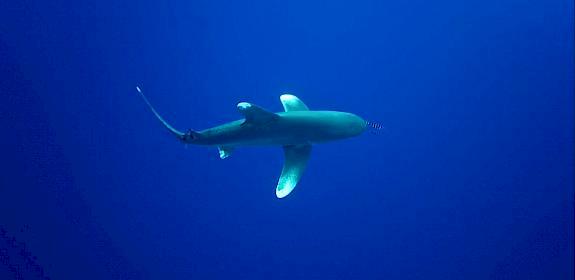
White Rhinocerous Diceros bicornis
i
Setting the score for international wildlife trade
CITES is the main international agreement that controls international trade in wild animals and plants. 183 governments are currently signatories, working together to ensure that trade in wildlife specimens does not endanger their survival.
Since its formation, advising and supporting the decision-making process, as well as the implementation and enforcement of CITES has been at the heart of TRAFFIC’s work. We supply trade information and expert analysis to the decision-making process at CITES (such as through the Elephant Trade Information System) to ensure that international trade in wildlife remains at sustainable levels.
CITES was formed in
1975
CITES CoP19
The 19th Conference of the Parties to CITES takes place between the 14th and 25th November 2022 in Panama City, Panama.
Explore the TRAFFIC/IUCN analyses of the Proposals to amend the Appendices, as well as the latest commentary and high priority agenda items.
CITES CoP18
The 18th Conference of the Parties to CITES took place between the 17th and 28th August 2019 in Geneva, Switzerland.
Explore the TRAFFIC/IUCN analyses of the Proposals to amend the Appendices, as well as the latest commentary and high priority agenda items.
9-Step Non-detriment Findings guidance
TRAFFIC and BfN have developed a suite of training materials and online courses to assist CITES Scientific Authorities make science-based Non-detriment Findings (NDF) for timber and perennial plants.
how does CITES work?
Although it is widely applied, the Convention is also widely misunderstood.
CITES regulates international trade in wildlife species included in its three appendices. It is often assumed that any wildlife commodity listed in CITES is Critically Endangered and should be banned from trade. Although this is the case for a limited number of species included in Appendix I (such as all eight species of pangolin), this is not true for those listed in Appendices II and III. Species listed in Appendices II and III are regulated, requiring trade permits to be issued by the CITES Management Authority of the exporting country following a Non-Detriment Findings (NDF) report.
Meetings of the Conference of the Parties (CoPs) to CITES take place every three years, where different Parties will propose amendments to species listings across all three Appendices.
Director of Policy, Sabri Zain at CITES CoP17 in 2016
i
TRAFFIC at CITES
We've been instrumental in supporting decisions at CITES. Our position at the forefront of wildlife trade monitoring and the development of sustainability frameworks affords us a unique perspective when making impartial recommendations regarding international wildlife trade policy.
Below are some of our recommendations and analysis from recent CITES CoPs.
CITES CoP17
Johannesburg, South Africa, 24th September-5th October 2016
analyses of proposals to amend the CITES appendices
The Analyses aims to provide as objective an assessment as possible of each amendment proposal against the requirements of the Convention as laid out in the listing criteria elaborated in Resolution Conf. 9.24 (Rev. CoP16) and other Resolutions and Decisions that have been adopted by the Parties. The analyses are jointly compiled between IUCN and TRAFFIC with proposal analysed in chronological order.
recommendations of proposals to amend the CITES appendices
These “Recommendations” use as their foundation the IUCN/TRAFFIC Analyses, which provide background information underpinning TRAFFIC’s advice. However, it is important to note that TRAFFIC takes a wider perspective when formulating its Recommendations. The basic question we try to answer is: “would a proposed change to the regulatory treatment of a species under CITES, on balance, be a good thing or not: or (in the words of Resolution Conf. 9.24 (Rev. CoP16)) would it be in the best interest of the conservation of the species concerned, and be a proportionate response to anticipated risks”.
CoP17 additional language materials
Download our Recommendations in:
CITES CoP16
Bangkok, Thailand, 03-14th March 2013
analyses of proposals to amend the CITES appendices
The approach taken for preparation of the Analyses followed that used successfully in preparation of the Analyses for CoP15. Following the deadline for Parties’ submission of amendment proposals (4th October 2012), the Analyses team compiled available information to prepare a first draft of the analyses.
recommendations of proposals to amend the CITES appendices
These “Recommendations” use as their foundation the IUCN/TRAFFIC Analyses, which provide background information underpinning TRAFFIC’s advice. However, it is important to note that TRAFFIC takes a wider perspective when formulating its Recommendations. The basic question we try to answer is: “would a proposed change to the regulatory treatment of a species under CITES, on balance, be a good thing or not: or would it be in the best interest of the conservation of the species concerned, and be a proportionate response to anticipated risks”.
CoP16 additional language materials
Download our Recommendations in:
CITES CoP15
Doha (Qatar), 13-25th March 2010
analyses of proposals to amend the CITES appendices
The 15th meeting of the Conference of the Parties (CoP15) to CITES took place in Doha, Qatar, from 13 to 25 March 2010 and was attended by some 800 Party representatives and over 390 observers from intergovernmental, international and national organisations. What follows is our Analyses of Proposals.
recommendations of proposals to amend the CITES appendices
These “Recommendations” use as their foundation the IUCN/TRAFFIC Analyses, which provide background information underpinning TRAFFIC’s advice. However, it is important to note that TRAFFIC takes a wider perspective when formulating its Recommendations.
CoP15 language materials and Tiger briefings
- TRAFFIC report on CoP15
- CoP15 full analyses Spanish
- CoP15 full analyses French
- CoP15 summary analyses Spanish
- CoP15: summary analyses English
- CoP15 summary analyses French
- TRAFFIC Recommendations Spanish
- TRAFFIC Recommendations French
- TRAFFIC Recommendations Chinese
- TRAFFIC Recommendations Japanese
- Tiger briefing English
- Tiger briefing Spanish
- Tiger briefing French
- Enforcement Action report CoP15
CITES CoP14
The Hague, Netherlands, 3–15th June 2007.
844 representatives from CITES Parties and 400 observers from intergovernmental, international and national organisations attended CoP14.
analyses of proposals to amend the CITES appendices
The Analyses - as these technical reviews are known - aim to provide as objective an assessment as possible of each amendment proposal against the requirements of the Convention as laid out in the listing criteria elaborated in Resolution Conf. 9.24 (Rev. CoP13) and other Resolutions and Decisions.
recommendations of proposals to amend the CITES appendices
These “Recommendations” use as their foundation the IUCN/TRAFFIC Analyses, which provide background information underpinning TRAFFIC’s advice. However, it is important to note that TRAFFIC takes a wider perspective when formulating its Recommendations. The basic question we try to answer is: “would a proposed change to the regulatory treatment of a species under CITES, on balance, be a good thing or not: or (in the words of Resolution Conf. 9.24 (Rev. CoP13)) would it be in the best interest of the conservation of the species concerned, and be a proportionate response to anticipated risks”.
CoP14 language materials and additional commentary
CITES CoP13
Bangkok (Thailand), 2-14th October 2004
806 representatives from CITES Parties and 339 observers from intergovernmental, international and national organisations attended CoP13.
analyses of proposals to amend the CITES appendices
The Analyses - as these technical reviews are known - aim to provide as objective an assessment as possible of each amendment proposal against the requirements of the Convention as laid out in the listing criteria elaborated in Resolution Conf. 9.24 and other Resolutions and Decisions. The review of each proposal consists of a summary section and more detailed supporting text.
The summary section presents a synthesis of available information and, in a separate paragraph, a specific analysis of whether the proposal might be considered to meet the pertinent criteria.
recommendations of proposals to amend the CITES appendices
TRAFFIC publishes its recommendations on the Proposals to amend the CITES Appendices prior to each CoP and subsequent to its analysis with IUCN.
CoP13 additional materials
This includes:
- Wildlife trade in South-East Asia
- Call to attention on the CITES Strategic Vision and Action Plan
- Ramin trade
- Humphead Wrasse and marine trade
- Effective CITES enforcement
Analysis of legacy CITES CoPs
We have been involved in CITES CoPs since the Convention was first established. Below are our legacy reports from CITES CoPs 2–12.



